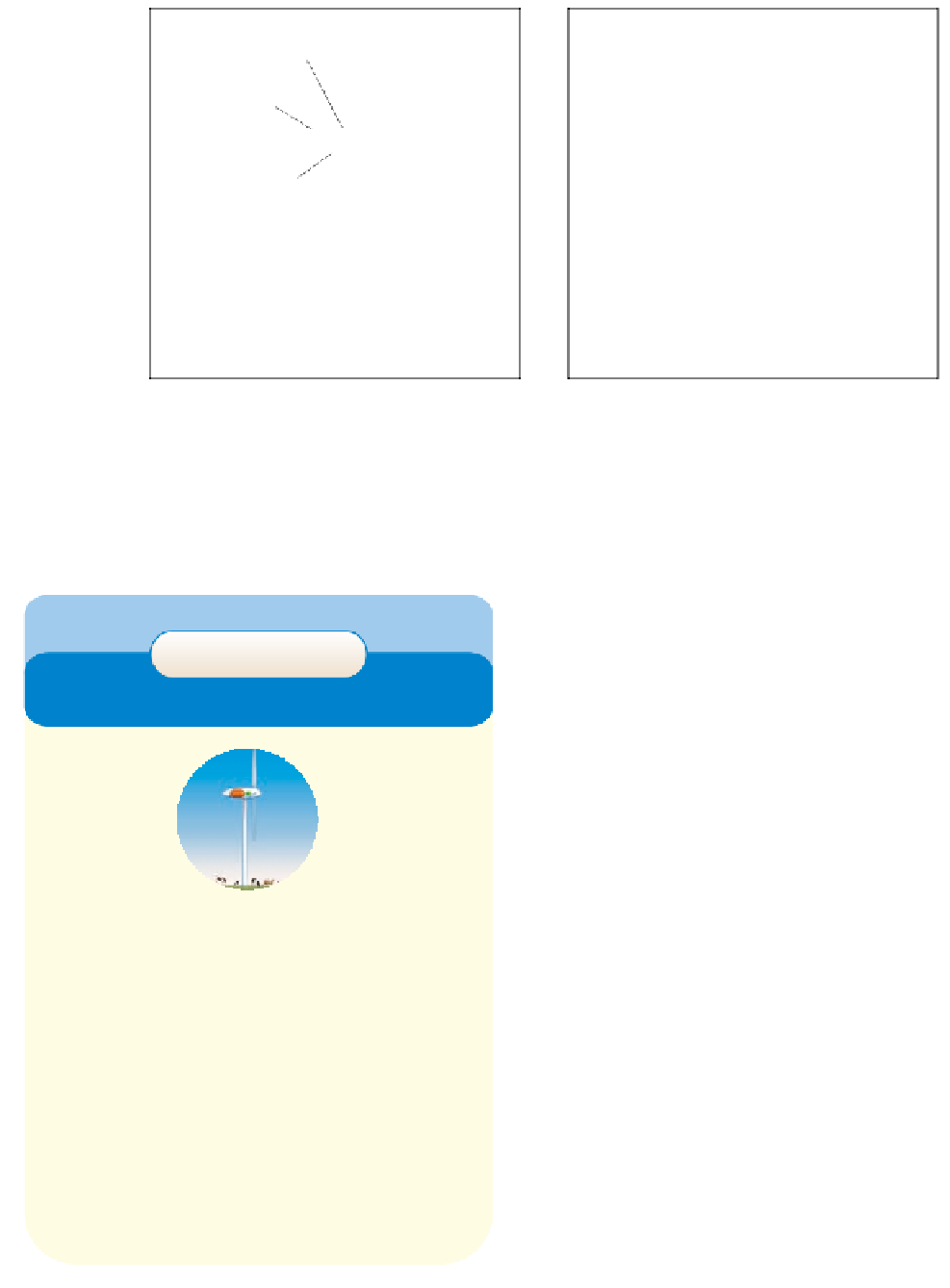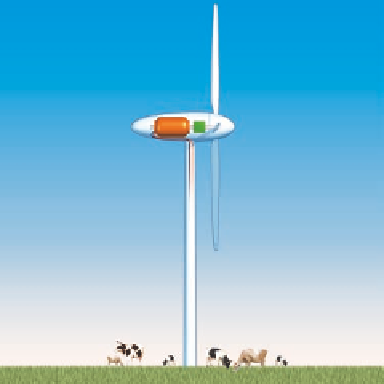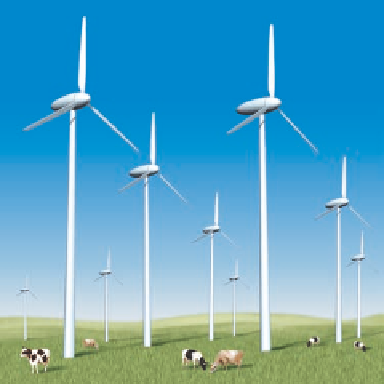Environmental Engineering Reference
In-Depth Information
Gearbox
Electrical
generator
Power cable
Wind turbine
Wind farm
Figure 13-37
Solutions:
Wind turbines can be used to produce electricity individually or in clusters,
called
wind farms
or
wind parks
that can be located on land or offshore
.
Since 1990, wind power has been
the world's fastest-growing source of energy.
The DOE calls the Great Plains states of North
Dakota, South Dakota, Nebraska, Kansas, Oklahoma,
and Texas the “Saudi Arabia of wind.” In theory, these
states have enough wind resources to more than meet
all of the nation's electricity needs. According to the
American Wind Energy Association, with increased
and consistent government subsidies and tax breaks,
wind power in the United States could produce almost
one-fourth of the country's electricity by 2025. This
electricity could be passed through water to produce
hydrogen gas, which could in turn run fuel cells.
Some U.S. farmers and ranchers already make
more money by using their land for wind power pro-
duction than by growing crops or raising cattle. In the
1980s, the United States was the world leader in wind
technology. It later lost that lead to Europe and Japan,
mostly because of insufficient and irregular govern-
ment subsidies and tax breaks for wind power com-
pared to those regularly received for decades by fossil
fuels and nuclear power.
Figure 13-38 lists the advantages and disadvan-
tages of using wind to produce electricity. According
to energy analysts, wind power has more benefits and
fewer serious drawbacks than any other energy re-
source. Many governments and corporations now rec-
ognize that wind is a vast, climate-benign, renewable
energy resource that can supply both electricity and
hydrogen fuel for running fuel cells at an affordable
cost. They understand that
there is money in wind
and
that our energy future may be
blowing in the wind.
T rade-Offs
Wind Power
Advantages
Disadvantages
Steady winds
needed
Moderate to high
net energy
High efficiency
Moderate capital
cost
Backup systems
needed when
winds are low
Low electricity
cost (and falling)
Very low environ-
mental impact
No CO
2
emissions
High land use
for wind farm
Visual pollution
Quick construction
Noise when located
near populated
areas
Easily expanded
Can be located at
sea
Land below turbines
can be used to grow
crops or graze livestock
May interfere in
flights of migratory
birds and kill
birds of prey
Figure 13-38
Trade-offs:
advantages and disadvantages of
using wind to produce electricity. By 2020, wind power could
supply more than 10% of the world's electricity and 10-25% of
the electricity used in the United States.
Critical thinking: pick
the single advantage and the single disadvantage that you think
are the most important.
x
H
OW
W
OULD
Y
OU
V
OTE
?
Should we greatly increase
our dependence on wind power? Cast your vote online at
http://biology.brookscole.com/miller11.














